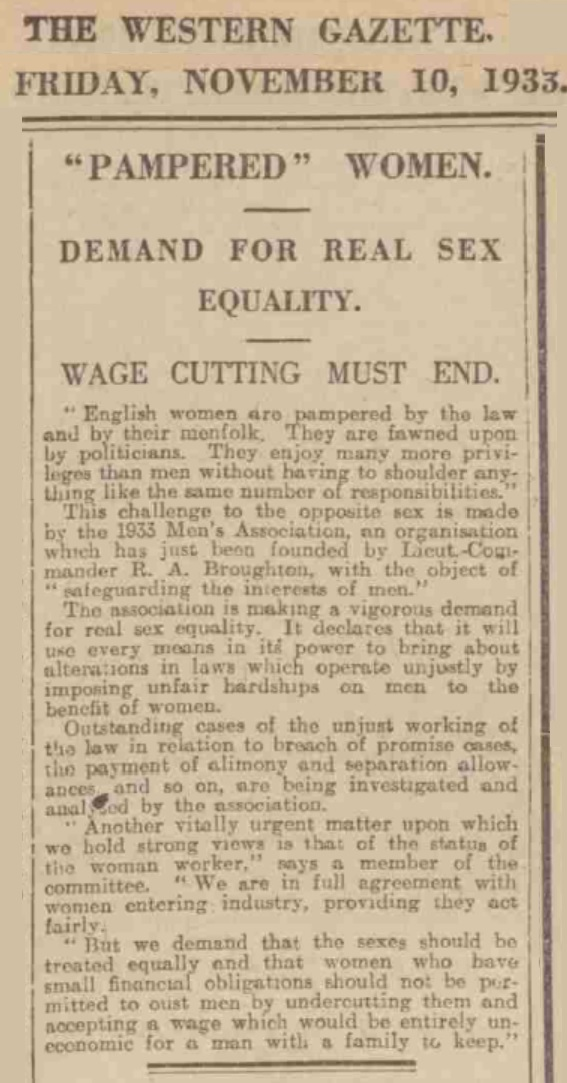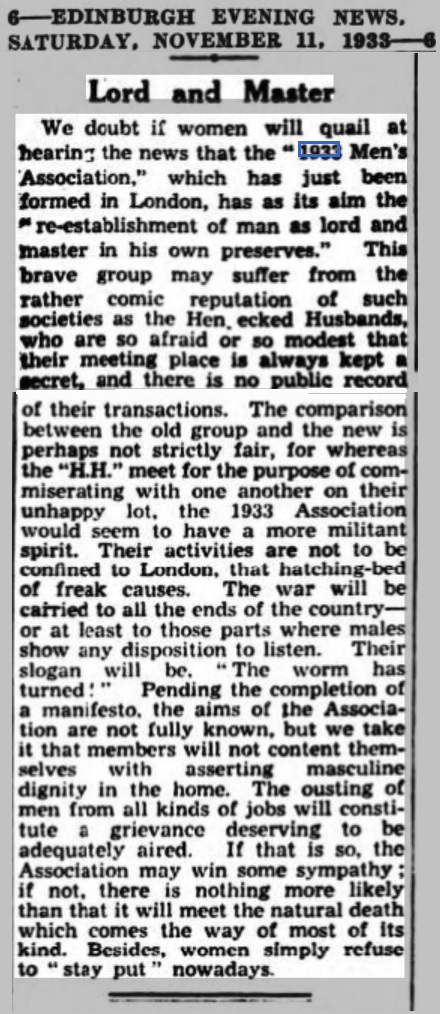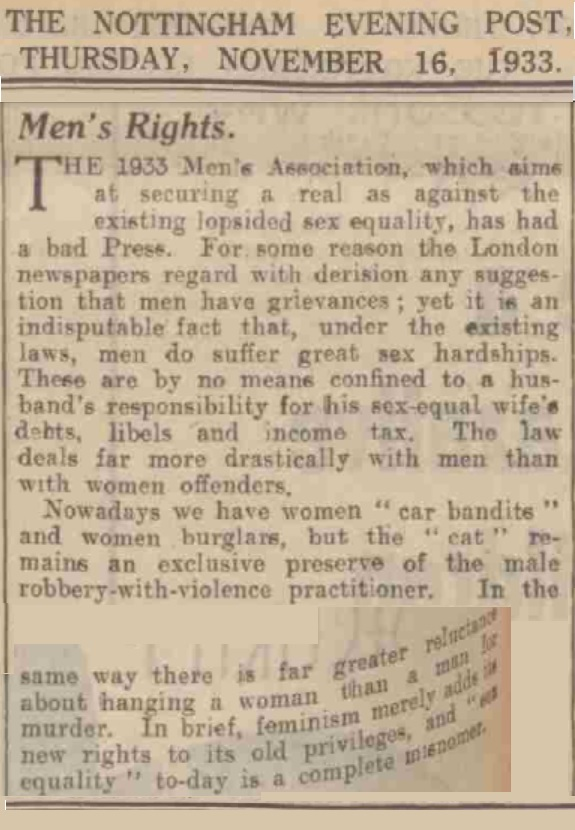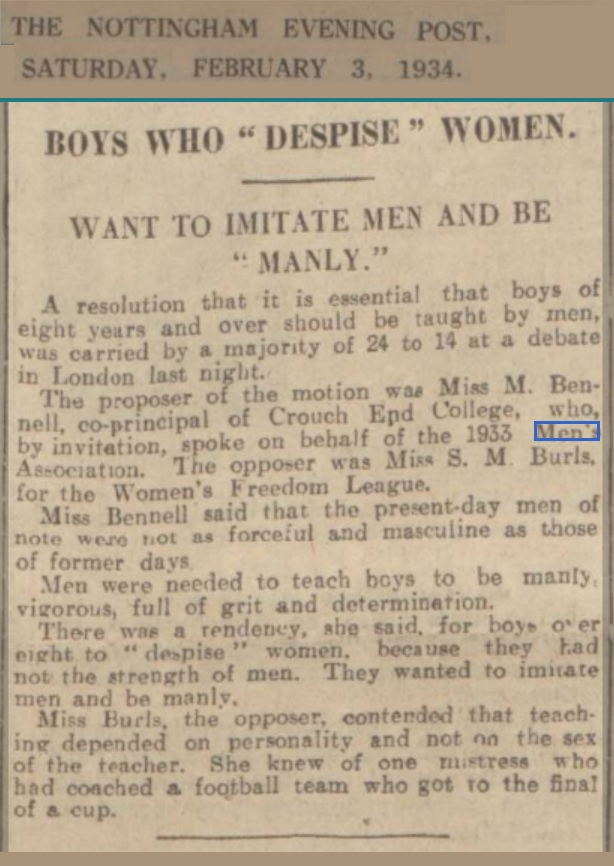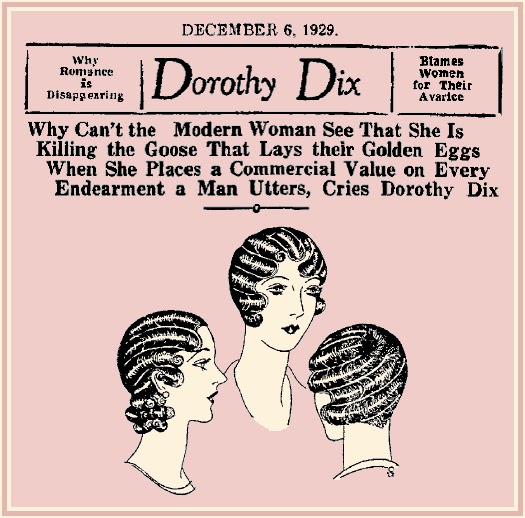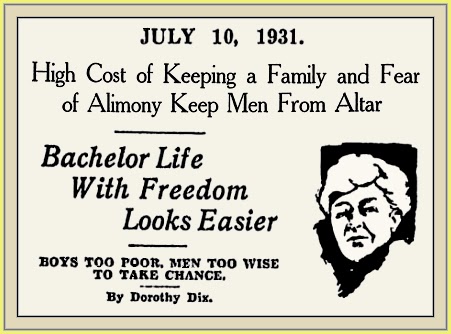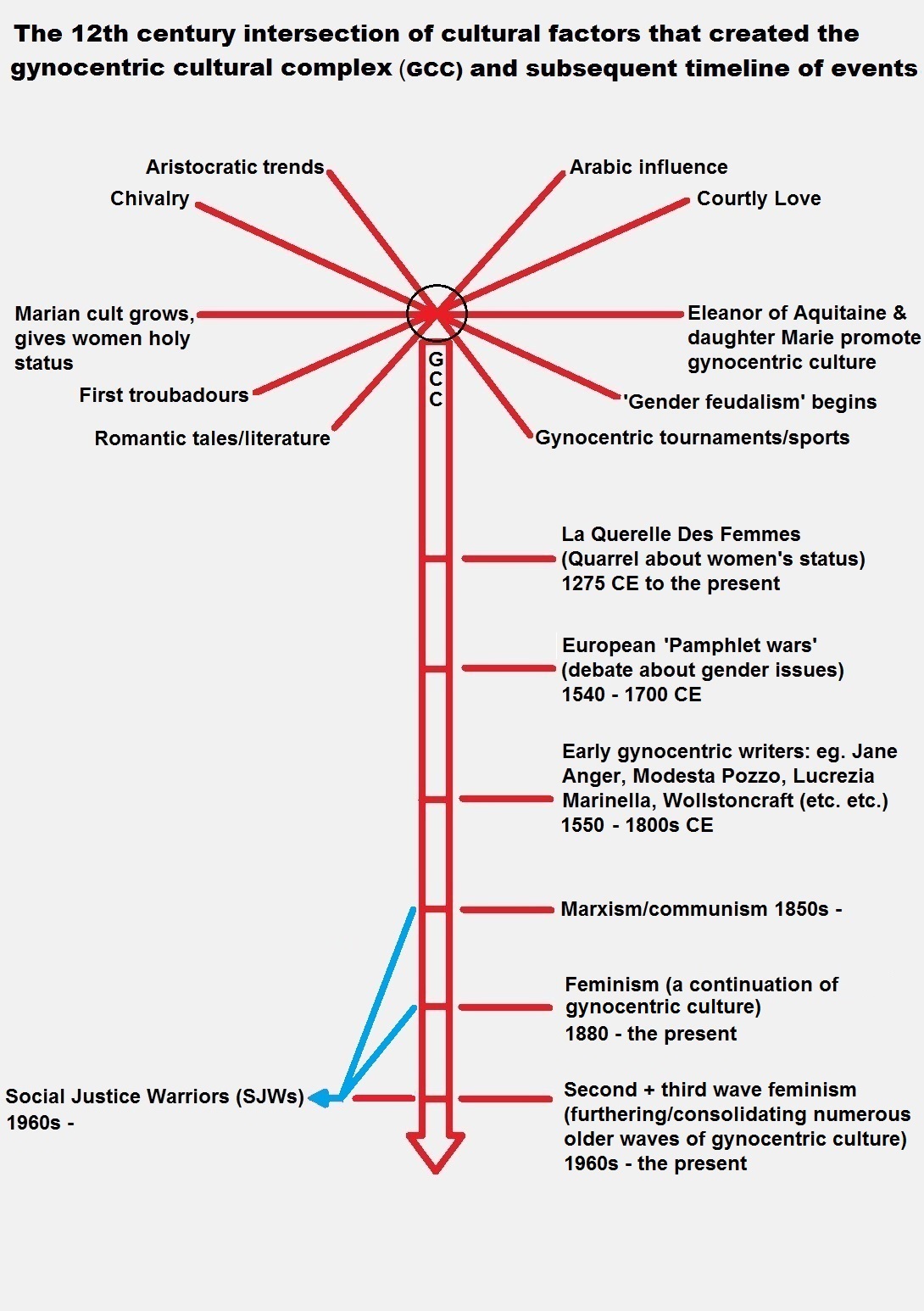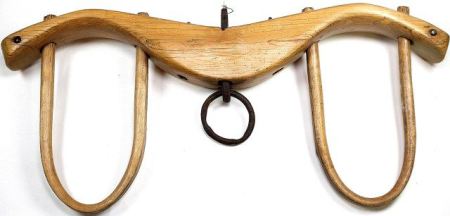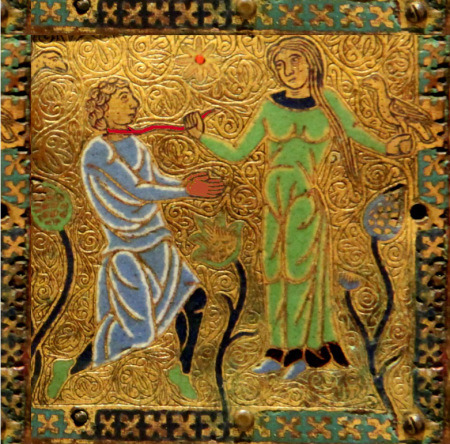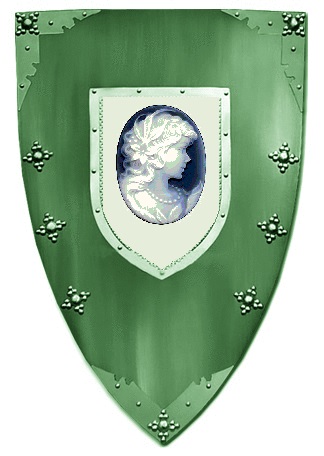
Psychology clings to a universal model – that men are incorrigibly flawed and require a dismantling of their identities, habits, and preferences before being reconstructed according to a feminist model of masculinity. All modern therapies have this basic premise in common.
For example, one of the more popular models of men and masculinity to emerge in the last 20 years, promoted as A New Psychology of Men, is described in the following terms by one of its founders:
The new psychology of men has emerged over the past 15 years within the larger fields of men’s studies and gender studies. Informed by the academic breakthroughs of feminist scholarship, the new psychology of men examines masculinity not as a normative referent, but rather as a problematic construct. In so doing, it provides a framework for a psychological approach to men and masculinity that questions traditional norms of the male role and views some male problems as unfortunate byproducts of the male gender role socialization process.1
Since it’s inception this “new” psychology of men has restated traditional gender stereotypes about men; that they are flawed, violent, emotional primitives in need of reconstruction. This supposedly “new” model has also been developed into a training course teaching therapists how to effectively work with men.
The course, designed by former American Psychological Association President Ronald Levant, is based on two principles held almost universally by therapists working with men; a). that patriarchy theory represents the real world, and b). that males are stunted in their emotional processing abilities. Let’s look at these two pillars of therapy.
Patriarchy theory
As with most psychologists and therapists today, Levant is informed by feminist-inspired patriarchy theory which posits that all men have power over all women and that such power is enforced by men’s violence. The theoretical vision, trumpets Levant, provides a “new” way of looking at men:
What scholars in the area of men’s psychology have attempted is nothing less than a reconstruction of masculinity. It starts from the recognition that there is a problem, and locates the roots of that problem in the male gender role… The new psychology of men strives to address the feminist critique of patriarchy while remaining empathetic to men.2
As many readers will know there is nothing “new” in this characterization of men, which we can summarize with the phrase, ‘Women have problems, and men are the problem.’ As Levant stresses, the primary approach to therapy with men is first to problematize them; “It starts from the recognition that there is a problem.”
In this model men are viewed as being problems before they even meet the therapist, who ignores the possibility that men’s problems may lie outside themselves in a world of grief they did nothing to deserve.
In other words, whatever the presenting complaints of the client they are immediately dismissed by the practitioner in order to coerce the client into an ideological mold of manhood. The practitioner, depending on their degree of indoctrination, may actually believe this will address the client’s issues but even a cursory examination of the “masculinity as identified problem” approach reveals numerous, deep flaws. In fact, this approach proves to be abusive in any reasonable interpretation of the word.
As I explain below there are other approaches to working with men that don’t presume they are flawed and need fixing. That approach begins with asking men what they experience in life, and what they might want to achieve in therapy, and actually listening to their answers. Therapists may be interested to hear men speak of a range of experiences and goals wholly unrelated to patriarchal domination of women and children.
Men as emotionally dumb
Referring to men as dumb has the double-meaning of both lacking in intelligence and being mute. This forms the basis of Levant’s theory that men possess little emotional awareness about themselves or others, that they are lacking in emotional intelligence, and that even were they to discover some emotional awareness they would not know how to express it in words, such is the depth of male lacuna. He refers to this problem in men as alexithymia – a Greek term meaning no words for emotions, insisting that most North American males suffer from this syndrome.
Levant states that “it is so very widespread among men that I have called it normative male alexithymia,”3 a syndrome that by definition only men and boys can be labelled with. There even exists a Normative Male Alexithymia Scale used to assess the depth of men’s need for therapeutic correction. Levant states,
One of the most far-reaching consequences of male gender-role socialization is the high incidence among men of… the inability to identify and describe one’s feelings in words… men are often genuinely unaware of their emotions. Lacking this emotional awareness, when asked to identify their feelings, they tend to rely on their cognition to try to logically deduce how they should feel. They cannot do what is automatic for most women -simply sense inwardly, feel the feeling, and let the verbal description come to mind.4
This claim, that men are “unaware of their emotions,” an assumption so typical of psychology’s view of men, has been a cornerstone of the therapeutic world for the last 40 years. And it is demonstrably wrong.
According to the vast majority of studies on emotional processing, men and boys are able to identify emotional arousal in themselves and others equally to women, emotions like jealousy, love, anger, sadness, anxiety, etc. But men and boys choose to regulate that emotional arousal not by verbalizing it so much (women’s preferred method) but by taking intelligent action. A woman for example might talk with her melancholic friend about what is worrying her in order to cheer her up; the man may invite the same melancholic friend to the movies; both responses -talking, or acting- serve to intelligently modulate emotions.
What Levant has failed to discriminate are 1. recognizing emotions, and 2. verbalizing them. He, and so many psychologists who came before and after him, assume that by not verbalizing emotion males must also have failed to recognize emotions. Countless studies however show this to be a false conclusion.5 Men, like women, can sense the full range of emotions – but they may choose to respond to that knowledge in a different manner to women.
Breaking with the past – starting afresh
Repackaging patriarchy theory is a move we no longer wish to make – at least not if we wish to genuinely help men. Increasing numbers of men are tired of waiting for the psychotherapeutic industry to drag its collective ass out of gynocentrism-land to develop a genuine new model for tackling male psychology.
To attain that model there has to occur a break with patriarchy theory and assumptions that men and boys are emotional dummies. As in a court of law we begin the new therapy with an assumption that men are not only innocent until proven guilty, but that ‘men are good’ to use Tom Golden’s iconic phrase.
Nor will work with men be savvy until it admits the realities of cultural misandry, gynocentrism and their undeniably crushing effects on modern males. The daily assaults on men and boys from advertizing, mental health services, media, family courts, pharmaceutical companies, education from grade school to grad school, anti-male bigots and ideologically driven governance must be included in the picture.
These are problems which are deleterious to all aspects of men’s lives, including mental health. The mental health industry is a huge part of that problem, not a part of the solution.
A sane alternative to all this must disabuse men, women and society of the following myths:
- men belong to a patriarchy and take that model as their life script;
- men are emotionally inept;
- men are default potential sexual predators;
- men are violent and uncaring;
- men are not necessary as parents;
- men are unable to commit;
- men are emotionally unavailable;
- men are not as human or deserving as women.
.
The things we do want to include in a new mental health model are:
- enhanced understanding of misandry, gynocentrism and their consequences;
- recognizing and honoring men’s emotional acumen;
- recognizing and combating misandry and gynocentrism in the mental health industry;
- professional understanding of the ways men differ from women in how they cope with life;
- a prohibition on the practice of expecting men to emulate women’s emotional processes;
- an allowance of men’s legitimate anger without infecting them with ideological shame;
- the steadfast belief that men’s issues, pain and needs are as important as anyone else’s.
.
These points alone are sufficient to create a revolution in the way we work with men. As a truly new approach to men’s welfare and psychological health, An Ear For Men has been launched and the coming Men’s Mental Health Network will be promoting these principles and providing a range of specialized services from professionals who have been thoroughly vetted in their knowledge of men’s issues, and in their compassion for the same.
References:
[1] Ronald F. Levant, ‘The new psychology of men,’ in Professional Psychology: Research and Practice, Vol 27(3), Jun 1996, 259-265
[2] Ronald F. Levant, Men and Emotions: A psychoeducational approach – course material, Newbridge Publications, p.4, 1997
[3] Ronald F. Levant, Men and Emotions: A psychoeducational approach – course material, Newbridge Publications, p.9, 1997
[4] Ronald F. Levant, William S Pollack, A New Psychology of Men, pp.238-239, 1995
[5] For example, this Finnish study shows that while women were more proficient at verbalizing feelings, men and women were equally proficient at identifying feelings: Salminen, J. K. ‘Prevalence of alexithymia and its association with sociodemographic variables in the general population of Finland,’ Journal of psychosomatic research, vol. 46, no1, pp. 75-82, 1999
See also: Narrative Therapy with Men by Paul Elam and Peter Wright
